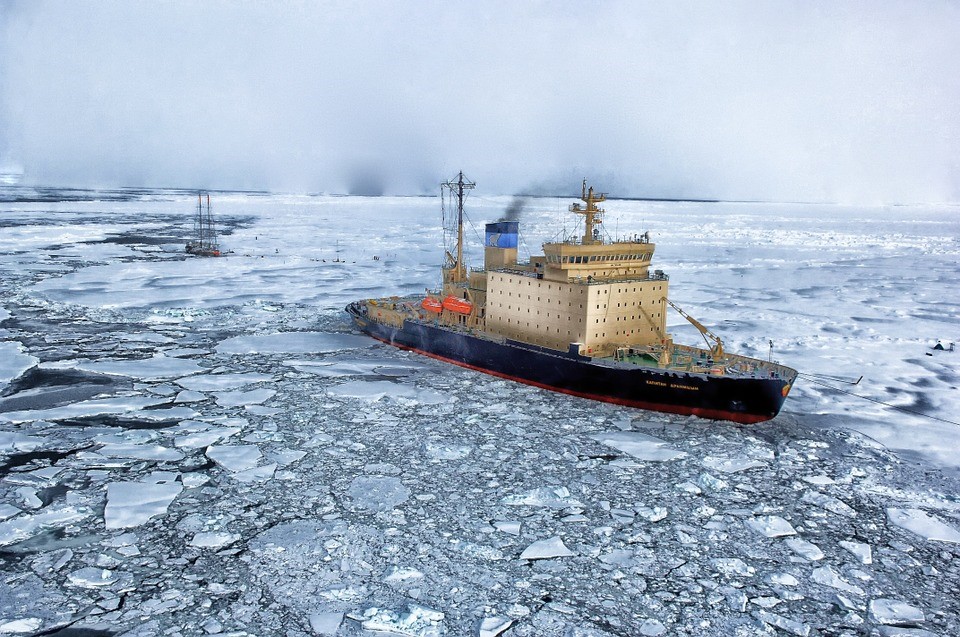Ninety-seven years ago, the Soviet Union laid its first modern territorial claim to lands and islands located in the Arctic region. More recently, in 2001, recognizing the area’s potential for economic wealth from potential energy exports, Russia submitted a claim to an extended continental shelf beyond its 200-mile exclusive economic zone. In December, due to Putin’s invasion of Ukraine a year ago, the the G7, EU, Canada, and Japan began implementing a $60 price cap of Russia’s seaborne crude oil exports. China and India quickly seized on the opportunity for inexpensive energy offered by Russia. The Economic Times reported, however, that there may be additional ceilings on Russian petroleum products later this year that will greatly impact Russian exports. In retaliation, Putin announced that those countries that adhere to the price cap or other sanctions will be prohibited from buying Russian energy.
Additional sanctions will place Russia in a complicated situation as most shipping insurers are members of the “Price Cap Coalition.” The majority of the world’s cargo companies are subject to it, according to Grant Turner, of the Jamestown Foundation. He says that “Russia may struggle to export from freeze-prone ports due to a reliance on foreign ice-class tankers—though China is bypassing this via the few ice-tankers Beijing and Moscow own.” Recent data from Russian sources claim that the country experienced an increase in oil production last year by two percent to 535 million metric tons and a growth in oil exports of seven percent. In January, the Russian publication Sputnik claimed that this helped Russian budget revenues in 2022 rise by 28 percent, or $36.7 billion. In the first two quarters of 2022 most of Russia’s Arctic oil exports went to Northern Europe. That declined in the last half of the year to about one-third and, Turner says that the High North News reported that by November “shipments had almost completely pivoted to Asia.”
Russia surpassed Saudi Arabia as China’s primary source of oil in 2022. Turner says good data is difficult to find on China’s current Arctic crude figures, but it appears that Russia’s discounted prices can meet its short-term needs. Beijing is in a solid position to leverage its influence over Moscow as Putin needs the energy sales. China last year announced that it is retaining its coal-fired electric plants for 40 years. It imports less than 10% of its coal. Over 55% of Chinese energy comes from Chinese-mined coal. As needed, it can obtain energy resources from non-Russian sources as China is expanding its influence operations in the Arctic. Turned argues that “For the United States and its partners, India’s case is perhaps more concerning. From April through December 2022, Russia exported about 64,000 barrels per day (b/d) of Arco and Novy Port grade Arctic crude to India.” By last October Russia was India’s largest source of crude (22%) and by November broke an export record with 6.67 million barrels of Russian crude sold to India. Last year India released its official policies for the Arctic (May 2022) and Antarctic (August 2022). What is significant is that the Arctic strategy, notes Turner, “is distinguished by its discussion of raw materials, trade, development and security.” In December the Economic Times pointed out that although Russia was not mentioned by name, the country is expected to remain a primary partner in achieving India’s goals with a focus on energy and trade.
In a Jamestown Foundation China Brief last November, Sudha Ramachadran argued that India’s presence in Arctic politics may create another friction point in the Arctic as China is a rival for Russian energy resources. Washington is left of the discussion as the Biden Administration has failed to appoint an Ambassador to India and cannot challenge New Delhi’s reliance on Russian resources. As of January 15, the Biden Administration is allowing the continued importation of Russian petroleum products into the United States via India and China, according to the Times of India. Perhaps, the United States need to revisit its Arctic energy policy, too.
Daria Novak served in the U.S. State Dept.
Photo: Pixabay
